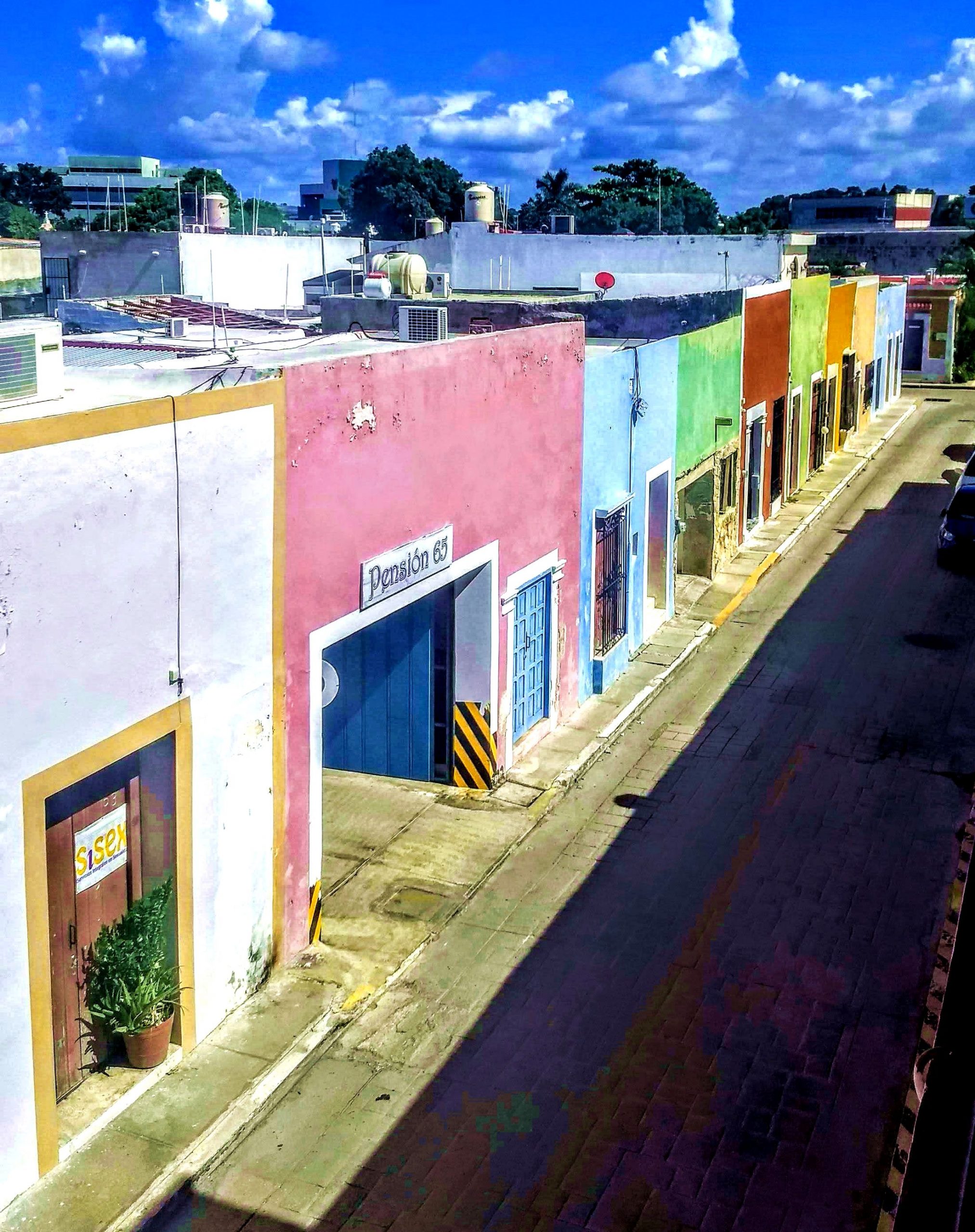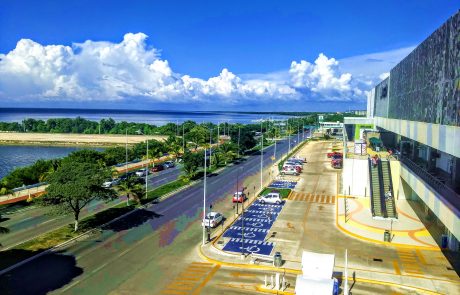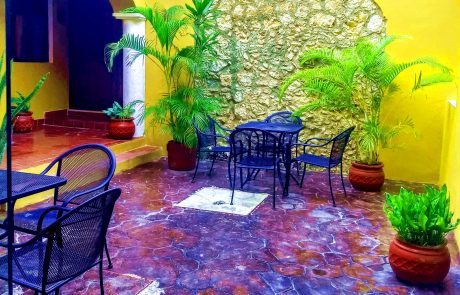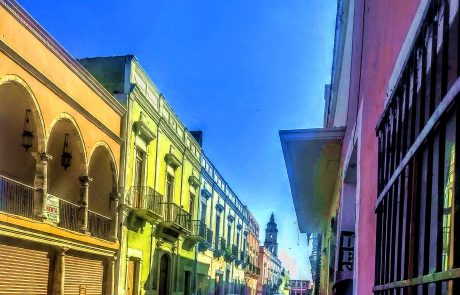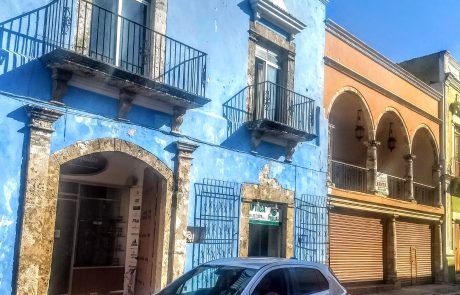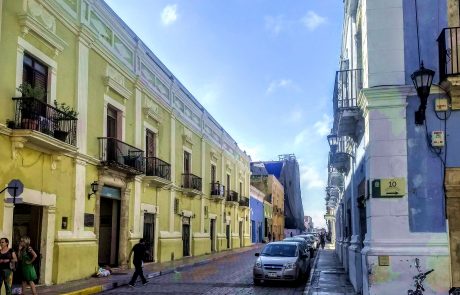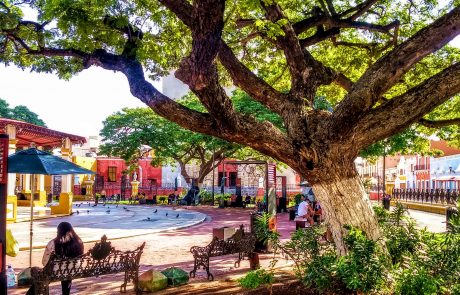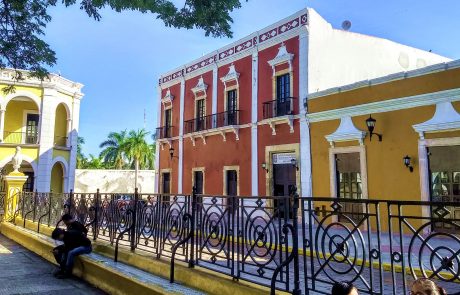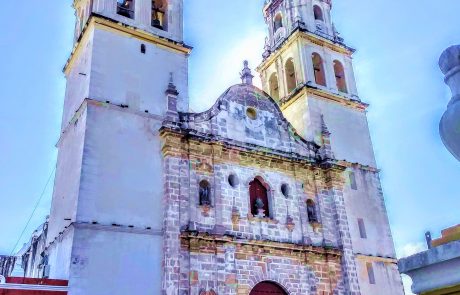November 2019
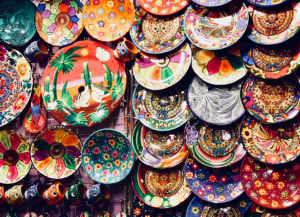 In the course of my research for my two-week trip to the Yucatan Peninsula I came across the news that Campeche has been designated a UNESCO World Heritage Site. Them’s pretty big potatoes. So in my planning I put in a side jaunt to Campeche from Uxmal, which is about 2 hours northeast. There’s a main highway — we’d call it a freeway in the States — going between Merida and Campeche and Uxmal is a jaunt off it to the south. It was easy peasey to zip back over to the main highway and take a run down to Campeche after a couple days at Uxmal, so that’s what I did. And boy, am I glad I did it.
In the course of my research for my two-week trip to the Yucatan Peninsula I came across the news that Campeche has been designated a UNESCO World Heritage Site. Them’s pretty big potatoes. So in my planning I put in a side jaunt to Campeche from Uxmal, which is about 2 hours northeast. There’s a main highway — we’d call it a freeway in the States — going between Merida and Campeche and Uxmal is a jaunt off it to the south. It was easy peasey to zip back over to the main highway and take a run down to Campeche after a couple days at Uxmal, so that’s what I did. And boy, am I glad I did it.
Since I was there only one day I can’t claim to be an expert on the place, but I can give my impressions and some pics. My impressions were surprising because they were so positive. I hadn’t expected to find in Campeche an appealing combination of the old and the new, but that’s exactly what it offers. I stayed in a charming boutique hotel in the old town — from whence the UNESCO designation comes, it must be said, the Miami-like modern part along the coast with the fancy office buildings and the main mall didn’t bring in the kudos from UNESCO. If the truth be told, however, I would have thought less of Campeche had not both things been available, the old and the new. So let’s have a look at what’s going on there.
The town has embraced its tourist potential and shows a degree of marketing and organization that goes wholly lacking in Merida. Some people may find my disgruntledness with Merida perverse — but there it is. Disgruntled I was and left after my five days there with no intention of returning. I changed my itinerary specifically to avoid returning to Merida. What was to be another pass through Merida on the way to Izamal became another sojourn in the Puuc region with a repeat of my stay in Uxmal. It worked out beautifully and left me with fond memories I’ll cherish for years to come. Had I kept to the original itinerary and spent the two days in Merida, protective amnesia would already have set in.
I don’t have tons of pics so I’ll just throw them out and give a bit of commentary afterward:
The first pic shows the main drag along the coast — the “Malecon” — which is the fancy new part. There’s been a road along the coast for centuries, I expect, but it’s all been poshed up and all the construction along it is new. It looks a tidy and miniature version of Miami Beach or Bocagrande in Cartagena in Colombia. There’s a great pedestrian zone along the coastline where it’s possible to take in the sights both of the ocean and of the development along the avenue. In the first pic you can see the general layout, taken from the second floor of the main mall in Campeche, the name of which escapes me at the moment but you can’t miss it.
The second and third pics are from the boutique hotel I stayed in. It’s on the southwest edge of the Old City and offers a very comfortable and atmospheric ambience. I had the feeling as I moved around in it that I was in the home of an established Spanish family. The tilework on the floors was lovely — whether historical or not I can’t say, but no matter, pretty is pretty. Thank God there was good AC because the temperatures on the coast are sweltering in Campeche just as they are in Merida. The second pic is the terrace and the third a handsome scale model of an old sailing ship such as the English pirates might have used. They were the reason the city wall was built, and pirate lore figures heavily in the image of Campeche peddled to tourists. It’s somewhat dissonant cognitively to have “Shiver Me Timbers Matey” stuff pushed by a place that is as Mexican as it can be. There’s no evidence of the pirate element on the ground, of course, and you’ll look hard to find an Englishman anywhere about the place. All the same, pirates are part of the gig in Campeche.
If you stay in the Old City you can easily get around to see all of it on foot, provided the heat doesn’t slow you down too much. I wandered at great length and took in the sights. Here are the pics from my wanderings:
The first three pics show views of streets in the Old Town. It’s vaguely reminiscent of a Spanish town of the time, it seems to me. That’s part of the double-edged sword for me about seeing things in Mexico. It’s like looking at Spain through the wrong end of a telescope. You see the streets, the buildings and the churches and you think, “Well, it looks kind of like Badajoz, but it isn’t.” Indeed, it isn’t. That reality becomes unavoidable especially in the churches. The reflection of the Spanish originals shows the mirror to be somewhat distorting. The image does not strike true. What is it? The proportions? The attention to detail in the finishing work? Subtle differences in the architectural design?
At the risk of seeming harsh, I’d say the difference is in a combination of lack of originality and negligence. The churches in Spain are not imitations, they are themselves and they look it. One may discern influencing elements in the architecture — Arabic elements, usually — but the building sat in front of you is itself and cut from local cloth. In Mexico it’s always a matter of looking at cousins, not brothers. Sometimes the family resemblance is stronger, sometimes weaker. The church in the Old Town of Campeche is a poor reflection of its originals in Spain. For a place that has a UNESCO World Heritage designation, you’d think things would be poshed up a bit to make it look its best. Nothing of the sort. The exterior, nothing terribly impressive to begin with, shows significant deterioration. Such sights leave me feeling ambivalent. Being a nice person, I want to accord the greatest possible credit to the building before me. Having been in Spain multiple times where I admire the ecclesiastical architecture immensely, I’m embarrassed to find myself comparing what stands before me to what I’ve seen in the Old Country. The comparison is perhaps unkind but inevitable. Colonial architecture is derivative, that goes without saying. Derivatives can be true to type or off the mark. It’s luck of the draw with colonial architecture and in my experience things are usually a bit wide of the mark. I took that as a factoid of the day in the Old Town and kept moving.
The streetscapes are very lovely and I think any town in Spain would be proud to have that showing. Obviously the town plan comes directly from the Old Country and holds true to form. The pastel colors of the buildings are the hallmark, of course, and come off to great effect in the sunshine. I’m amused as I walk such streets to notice the architectural details of the buildings. They come from the architectural syntax of Western tradition and get thrown about like balls being tossed between children playing on a beach. One building will take up pedimented windows, another will go for arches, you can never tell from one building to the next what will come, but it all hangs together and looks lovely. It’s a pleasure to walk the streets.
The main square (Zocalo) is lovely, as well, as the fourth pic shows. Spanish main squares are often bare things, all paving stones and precious little greenery with few places to perch your backside. The Zocalo in Campeche is made for lolligagging in the shade. It has a fine gazebo which I’m sure resounds with mariachi music on the weekends. The weekday I visited was low-key, the people sitting around the square were just passing the time. They were of all ages, as well, not just old folks hanging out because they didn’t want to sit in the house. On the weekends there are musical performances and lots of street vendors at work, so I hear, so it’s probably a hive of activity when the work week is done and it’s time to party.
Campeche is a very clean place. It has the look of being well cared for — something that in the States goes into an assessment of a location being “a nice place.” Even if there were a bit of litter on the streets, I’d still call Campeche a nice place. It has wonderful atmosphere in the Old Town and a pleasant modernity on offer in the newer part. The coastal development has been done thoughtfully and well, which makes the seaside experience an urban pleasantness, not a haphazard placement of a jumble of buildings next to the water. For both the old and the new parts I give Campeche two thumbs up.
Given the amount of time, energy and money the city has put into building its tourist interface, it should figure on more people’s bucket list as a worthy destination. Yes, it’s smallish, and yes, it’s probably doable in two days max, but I can easily imagine passing a week or a couple of weeks there to take in the atmosphere and wander taking in the sights. It has everything available you could ask for — good restaurants, good hotels (at reasonable prices), friendly people and lots of architectural eye candy. What’s not to like about that?
So here’s my pitch for Campeche: it’s a winner. If you have a chance to go, don’t miss it.
